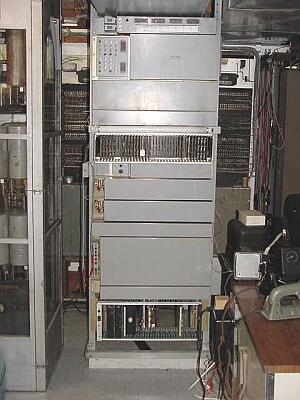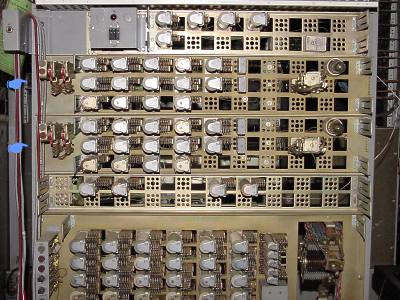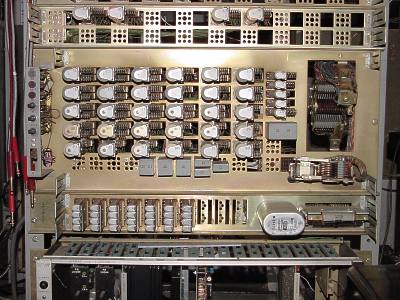
This is an Automatic Electric Automatic Number Identifier (ANI). It was used to determine the calling number of a CO line or PABX extension for billing purposes. When the caller dialed a toll or outside number (depending on whether the ANI served a CO line or PABX extension), a special ANI trunk was used that connected through a Centralized Automatic Message Accounting (CAMA) center. After the desired number was dialed, the CAMA office would return an off-hook condition to request the identity of the calling extension. At that point, three separate parts of the ANI would work together to detect, decode and transmit the calling number as a string of Multi Frequency (MF) digits.
It's really a remarkable combination of electromechanical logic with just a little electronic circuitry thrown in.






